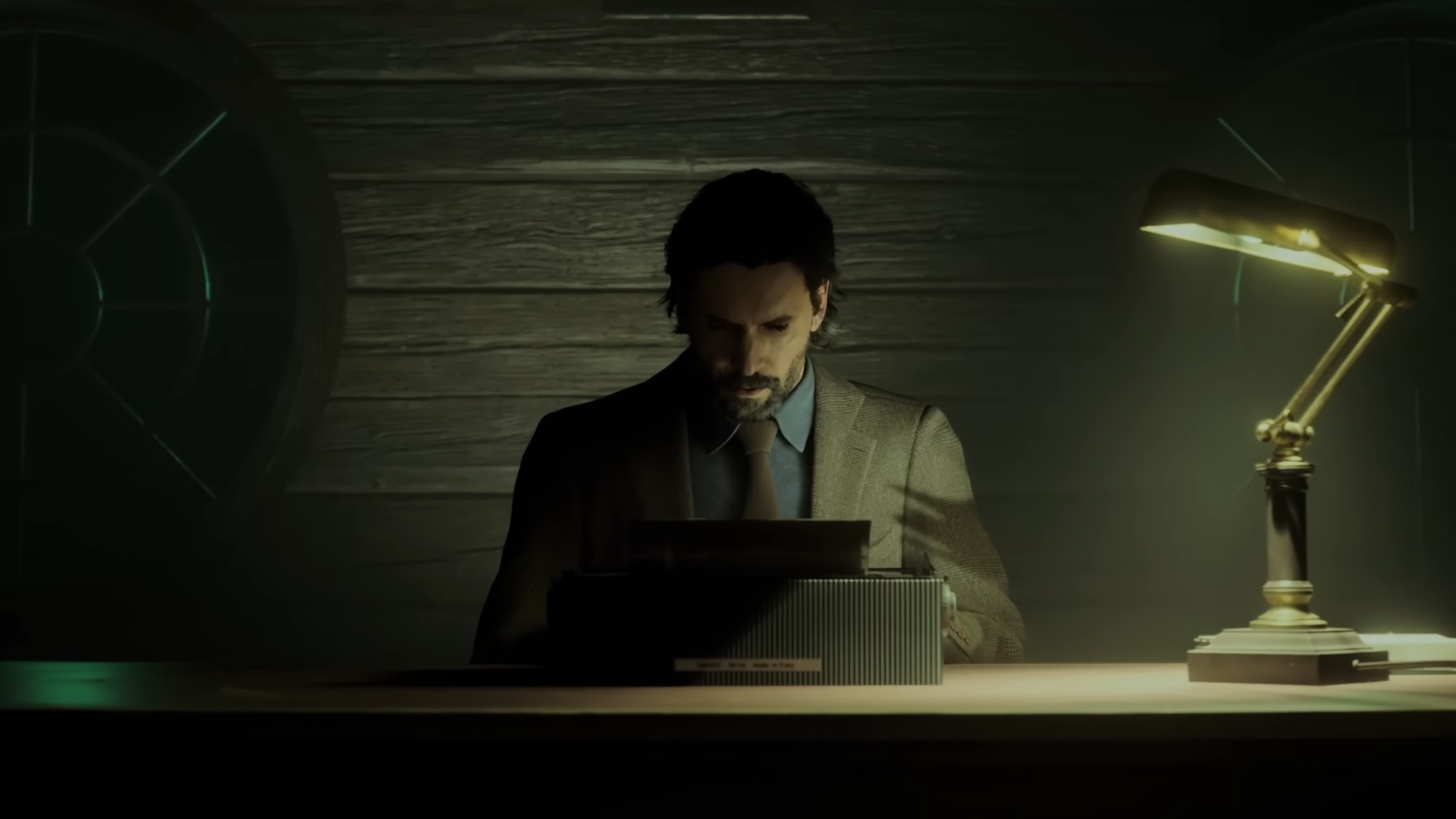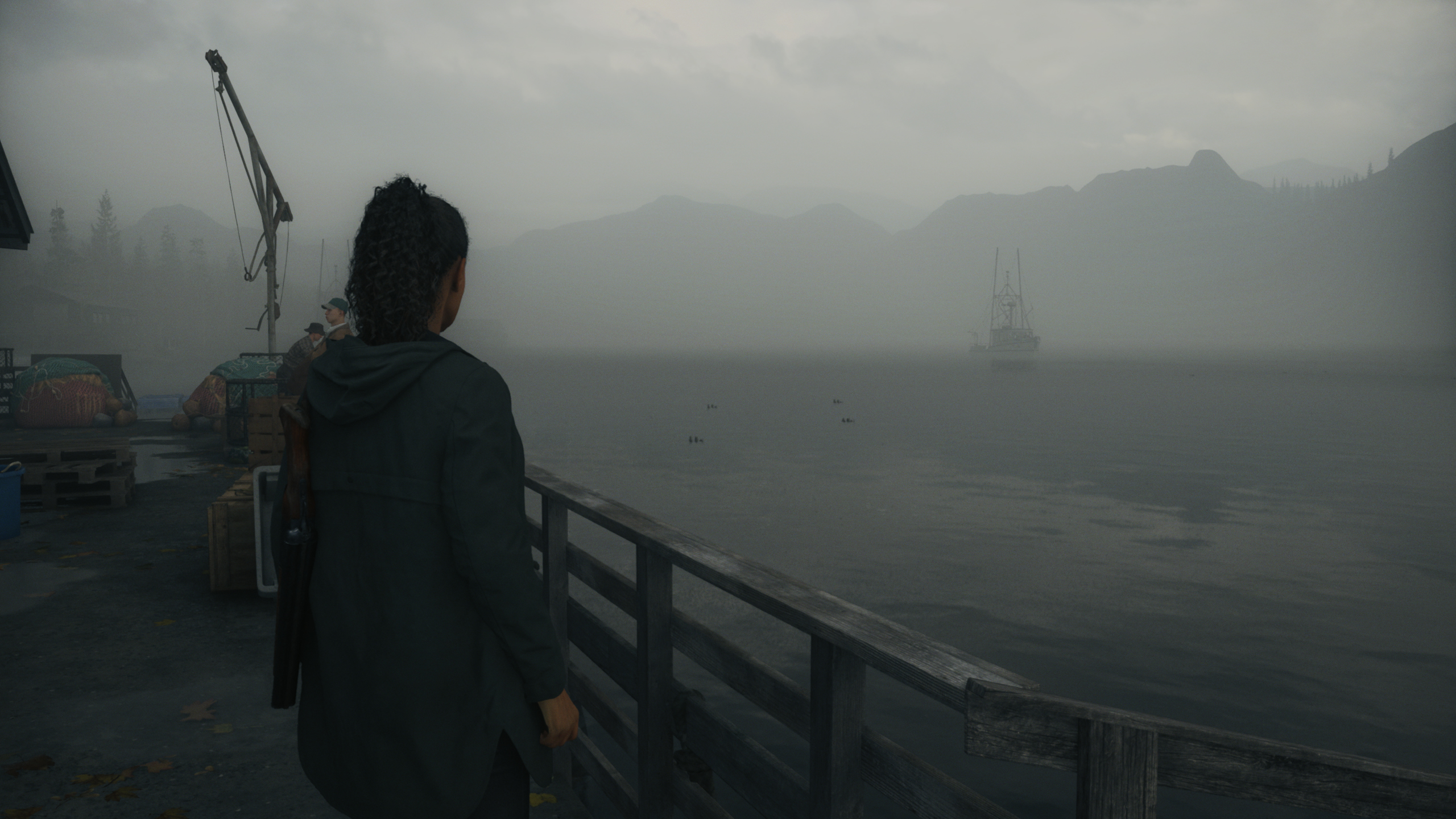Alan Wake 2's latest patch could be a sign of more anti-jumpscare toggles in horror games to come—and I'm all for it
I like the chills, but not the cheap thrills.

I love listening to people dissect horror stories. I enjoy a good horror comic, and that hot wash of goosebumps you get after a page-turn reveal. I like dipping my toes into gothic fiction and horror from time to time—the kind that leaves you discreetly double-checking your locks before bed each night. Despite all of this, I absolutely cannot stand horror games.
I am admittedly a bit of a scaredy-cat—but my physical, full-body reaction to jumpscares also sucks. Every muscle in my body seizes up, I usually knock a drink over, my heart pounds out of my chest, my mouth goes dry, and I can't calm down for about 20 minutes. I'm left feeling like I've been slapped around by a ghost. I'm obviously fine within the hour, but it's not an experience I'm keen to repeat for kicks—I just don't have the energy, more than anything.
As a result horror games—and most horror movies—have forever sat just out of reach. I'd chalked that up to a resigned "they're not for me", not everyone should enjoy every game—but learning about Alan Wake 2's recent update has me wondering whether that needs to be the case forever.
Games already add accessibility features when it comes to scares. It's no longer surprising to see a mainstream game add an arachnophobia mode, with some horror games like SOMA even patching in safe modes to let players soak in the ambiance without the pressure of being hunted. It's not as if Alan Wake 2 is the first to do this, either—there are similar toggles in games like Spooky's Jump Scare Mansion or Scrutinized. They're just few and far between.
My particular jumpscare pains are only unpleasant, rather than being medical—but I'd be surprised if there weren't players out there with, say, heart conditions or blood pressure problems that'd like to dip their toes into more psychological horror games, if they could just restrain themselves from going "ooga booga!" all the time. But if you want to fully jumpscare-proof your game, there are a couple of issues to tackle.
Cutscenes and emergent jumpscares

Accessibility options are generally good, but they also take a lot of work. Having a suite of toggles, such as high-contrast modes, colour-blindness options, or control schemes requires some elbow grease—but these elements are usually additive. They can be patched in. Making a game optionally jumpscare-proof might be a little harder. Unlike Alan Wake 2's disjointed horror flashes, plenty of games will work a cinematic, movie-style jumpscare into a scripted event or cutscene.
Let's say a toggle pauses the game before a jumpscare, and gives you the chance to mute the audio before it happens—or watch the jumpscare in slow motion. You can argue that's intrusive, and it does arguably kill the horror dead, but I don't think that's a huge problem.
Keep up to date with the most important stories and the best deals, as picked by the PC Gamer team.
You could make the same argument that echolocation-style audio pings such as the ones added to Star Wars: Jedi Survivor mess with the game's sound design. While you'd be technically correct—it's also irrelevant when it comes to someone who needs the feature to play in the first place. Without the feature, they're not putting up with the intended experience—they're just not playing.
The more serious task? Making sure you catch every jumpscare in your net. If you advertise your game as being accessible to, say, someone with a heart condition, you really have to make sure you stop any jumpscares from happening. It's a similar burden of responsibility when it comes to seizure prevention. There has to be a promise of absolute safety, otherwise you need to give a warning.

Then there's what I'm going to call emergent jumpscares. Designers aren't always in control of how a player might be startled. Take Lethal Company, for example: That's a game I wouldn't describe as scary—I'm able to play it, despite my wimpiness. But you'll often get caught off-guard simply by the way its enemies and environments are put together, rather than a deliberate attempt to startle you.
I'm not sure how you'd solve that problem without compromising the game's difficulty or atmosphere. However, it may prove less of a worry—after all, a full-screen demon wailing in your face is more of a problem than the mild surprise of stubbing your toe on an unexpected zombie.
Ultimately, I don't expect every game to cater to my overactive fight-or-flight response—especially not in a genre where you're supposed to be scared. I would, however, appreciate it if more titles followed in Alan's wake and let me tweak my experience. I know what I can handle, and full-screen jumpscares just so happen to be a complete barrier to entry.
It's not like this is purely an accessibility problem, either. Plenty of players without serious medical conditions found Alan Wake 2's jumpscares obnoxious—including PC Gamer's own Sarah James, who was so annoyed by them that they stopped her from enjoying the horror aspects she liked. Wider complaints are a huge reason as to why the toggle was added in the first place.
Accessibility options often create 'everybody wins!' scenarios like these—like with Star Wars Jedi: Survivor's slow-mo option. It's useful for players with poor reaction times or motor control issues, but it's also a nice way to get some killer action screenshots. Similarly, if jumpscare filters become more common, then it will let players who like horror (but not jumpscares) tone things down a bit—while leaving the sudden scares intact for thrillseekers. Smiles all around.

Harvey's history with games started when he first begged his parents for a World of Warcraft subscription aged 12, though he's since been cursed with Final Fantasy 14-brain and a huge crush on G'raha Tia. He made his start as a freelancer, writing for websites like Techradar, The Escapist, Dicebreaker, The Gamer, Into the Spine—and of course, PC Gamer. He'll sink his teeth into anything that looks interesting, though he has a soft spot for RPGs, soulslikes, roguelikes, deckbuilders, MMOs, and weird indie titles. He also plays a shelf load of TTRPGs in his offline time. Don't ask him what his favourite system is, he has too many.

